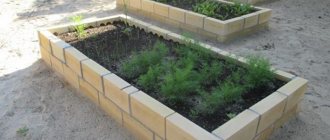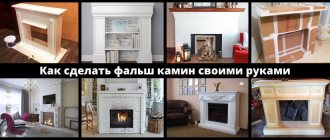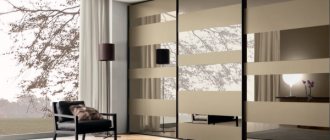A brick barbecue on the site of a private house or cottage is the central element of a recreation area. The stove can be placed in a gazebo or on the street, as an independent structure or as part of an entire complex - there are a lot of placement options and combinations of different functions.
Peculiarities
A brick barbecue is a stationary outdoor fireplace. And when designing, it is necessary to take into account the features of its installation and placement.
Types of barbecue and placement features
There are two types of outdoor brick barbecues: a single oven and a complex of oven devices.
In the first case, it can be a closed or open hearth with provisions for installing a spit, skewers or grate over smoldering coals.
If it is an open hearth, without a domed vault and a chimney, then it can only be located in the open air, subject to appropriate fire safety measures.
But if you take a strict approach, it is not easy to comply with these measures in the limited space of the local area.
A closed stove with a chimney can be placed either outdoors or in a gazebo (or under a canopy).
And quite often, owners are not content with just one barbecue function - baking food in the heat of burnt wood or charcoal. Here, nearby, they can put a stove with a hob, a tandoor, sections for storing firewood, a work table for cutting meat and preparing food. And this is a whole complex for cooking on the street.
But in any case, when choosing a location, they are guided by the standards for the placement of auxiliary (service) structures on the site - minimum distances from the house, the border with the neighboring site, and separate trees.
When a barbecue area is equipped with all the “conveniences” (water, drainage, electricity), then the proximity of utility networks and the possibility of connecting to them must be taken into account. If the connection to the water supply is not provided for according to the plan, then the stove should be located closer to the summer kitchen or not far from the house from the side of the regular kitchen.
Installation Features
Any brick structure, regardless of its size, requires a good foundation. And a stove is best suited for these purposes.
Moreover, when arranging a shallow strip foundation, it is necessary to take into account the characteristics of the soil. And they are such that the tape may not withstand the forces of frost heaving, and cracks will appear in the brickwork. The slab is a universal type of base, and it works well even on weak and floodable soils.
Usually the main counterargument against a slab is the high consumption of concrete. But for such a relatively small structure as a barbecue oven, not so much of it will be needed.
How to place a brick grill in a gazebo
Semicircular barbecue with stove and sink
Since this design is equipped with a chimney, the choice of location is limited. The device can be installed in the center or near the wall.
- In the center of the gazebo - this is how a small barbecue is placed, often with a double-sided firebox. You can approach it from both sides, and place a bench near the back side and warm up on a cool evening. The advantage of this solution: the grill is protected from wind and rain even in an open gazebo.
- The lateral arrangement is much more common, since in this case most of the area is free. If we are talking about a stove complex, it cannot be placed in the center.
If you are building 2 structures - a barbecue and a fireplace, install them away from each other, dividing the pavilion into a kitchen and guest area.
Laying the foundation
You can lay a finished road slab as a base, but this option has more disadvantages than advantages. And usually the foundation is poured with your own hands. The area of the slab is made according to the size of the furnace, with small tolerances around the perimeter. And the area in front of the barbecue is then laid out with the same tiles as the paths on the site.
Even at the design stage, the excavation depth and the thickness of the slab are calculated so that the surface of the slab rises 50-60 mm above the ground.
If the barbecue oven is relatively small, then it is enough if the thickness of the slab is within 10 cm. For a large oven complex, it is better to calculate the parameters of the slab based on the properties of the soil and the total load on the base. In this case, it may be necessary to fill a slab with a thickness of 12-15 cm.
Preparation
A step-by-step algorithm for preparing a site for concreting looks like this:
- Mark the place with pegs and string.
- Remove the top layer of soil to a depth of about 30 cm.
- Level and compact the bottom.
- Install formwork from edged boards or OSB strips. For reliability, tie the corners with “kerchiefs” made from scraps of material.
- Fill with crushed stone and sand in a total layer about 15-20 cm thick. Level, water and compact with a tamper.
- Cover the separating layer with rolled waterproofing. It will protect the foundation from getting wet by groundwater, and will not allow moisture to escape into the sand from the concrete during its maturation. The strips are laid overlapping by 15-20 cm, with access to the end of the future slab.
- A mesh of reinforcement is placed on the supports. You can link it yourself, but it’s easier to use a road grid map with parameters 100x100x6.0 mm or 150x150x8.0 mm. The reinforcement should lie approximately in the middle of the slab at a distance of at least 30 mm from the bottom and top surfaces. Along the perimeter, the mesh should not reach the boundaries of the formwork by 30-50 mm.
Selecting a location
There are no strict restrictions on choosing a location for a brick gazebo. It is important to remove it from all outbuildings and outdoor toilets, if any. They will spoil the sensations when eating and communicating. If possible, it is better to place the building in such a way that it offers a view of a pond or valley. This way, eating will be combined with pleasant visual sensations.
Orders
A barbecue oven, especially an oven complex, requires proper ordering. The “fault” is the presence of a chimney and the need to adjust the draft. In this design, it is practically no different from a fireplace or a Russian stove, and calculating the order from scratch is not so easy. But you don’t have to do this yourself - there are quite a lot of designs for stoves of any size and functionality on the Internet:
- Small oven:
- Barbecue with woodpiles:
- BBQ oven with cauldron:
Advantages and disadvantages of brick structures
Brick buildings last longer, so it is recommended to build the stove out of brick.
A brick structure has a number of advantages.
- Durability - an open or closed pavilion made of brick will last much longer than a building made of boards, timber or polycarbonate.
- High strength - the gazebo is not afraid of the strongest winds and mechanical damage.
- The stone accumulates heat, so this structure is cozy in damp autumn and cool in hot summer.
- It is much easier to complement a brick gazebo with a variety of devices: barbecue, barbecue, Russian oven. Here you can arrange an open summer kitchen. And if you glaze and insulate the building, you can turn it into a full-fledged guest house.
Flaws:
- A brick structure, even an open one, weighs a lot. It is required to build at least a shallow foundation.
- Construction takes a lot of time. To lay bricks correctly, you need high qualifications.
A brick gazebo with a barbecue or barbecue costs much more than a wooden building with a brick stove.
Brick, masonry mortar, other materials
When building a barbecue, you will need two types of bricks: fireclay and regular. Fireclay is needed for laying the firebox and chimney.
Firebox made of fireclay bricks
The furnace body is made of ordinary brick. And this circumstance must be taken into account when calculating the amount of brick.
Ordinary ceramic bricks come in only one size - 250x120x65 mm (not counting one-and-a-half or double formats). And fireclay (or stove) bricks can be of different sizes.
The brand of fireclay brick ShB-8 (250x124x65 mm) is closest to a regular ceramic block, and this “extra” 4 mm of bed width is compensated for by the different thickness of the masonry joint. In other cases, the sizes differ quite significantly.
Decorative finishing
To give a beautiful and neat finish to the barbecue oven, all seams between the bricks must be sanded with sandpaper or a special brush. Of course, you can use other finishing materials to create a more artistic look. As they say, there is enough imagination. You can use decorative stones; with their help you can recreate the atmosphere of an ancient castle, you can maintain the subtype of your plot or house.
Masonry
The brick oven is laid using a standard set of masonry tools, which includes:
- level, plumb line, square;
- cords;
- templates for masonry joints of different thicknesses (for the firebox and chimney - 3 mm, for other parts of the stove body - 5-8 mm);
- trowels;
- mallet;
- pickaxe, grinder with a disk for adjusting the dimensions of bricks and steel angles;
- jointing
The first rows are laid out dry first. They check the proportionality of fireclay and ordinary bricks, determine the size of the trim where it is necessary.
Then the laying begins. An ordinary brick is moistened by dipping it in a bucket of water for a couple of minutes. Fireclay bricks are only rinsed. After adjustment, the fireclay brick must be laid so that the side pounded with a mallet or cut with a disk faces outward, and not into the firebox or chimney. The masonry process itself involves bandaging the seams, with periodic monitoring of the vertical walls and horizontal seams.
After finishing the masonry, the stove is dried under natural conditions for 5-7 days. And then they are heated for one to two weeks (depending on the size and weight of the structure).
Small brick barbecue project for beginners:
Roofing device
For any roof you will need to install a frame - a rafter system. A support beam with a cross section of 100x100 or 150x150 mm is laid on the pillars.
The rafters are mounted depending on the shape of the roof - in pitched structures they rest on 2 opposite mauerlats, in hipped ones along the entire perimeter of the building and converge at one point.
Let's consider fastenings of the most popular types of roofing materials:
- Flexible tiles. A continuous deck of plywood, OSB or boards is laid on the rafters, with waterproofing on top. Each strip of tile (or individual elements) is glued and additionally nailed with roofing nails. The next row covers the place of fastening, thereby preventing the seepage of precipitation.
- Metal tiles. The decking for the roofing material is made sparsely. The boards are laid in increments equal to the wavelength of the tiles. Usually this is 35 cm. The sheet is fastened with roofing screws to the lower deflection. Each subsequent sheet is edged over the previous one and secured.
- Ondulin. The lathing for corrugated cellulose-bitumen sheets is installed in increments of 45 cm with a slope of 10-15° and 61 cm if the angle is greater. For fastening, roofing nails are used, which are driven into the upper part of the wave.
The installation of the roof is completed by installing the ridge element, wind board, and protective strips in the places where the chimneys pass.
If the gazebo is open, the roof structure ends there. In insulated rooms, the roofing pie is more complex. It is necessary to install not only a heat insulator, but also a waterproofing (top) with a vapor barrier (bottom). Dense polyethylene films and vapor-permeable membranes are used. To protect the insulation from condensation accumulation, vapor barrier materials must be absolutely impenetrable to vapor molecules, while waterproofing should not prevent the evaporation of moisture into the atmosphere.
Temporary barbecue of their bricks
You can make a temporary barbecue oven out of brick - without using mortar. For these purposes, you can use ordinary brick - an open hearth (without a chimney) and small gaps in the masonry will ensure a thermal regime acceptable for ceramics.
A step-by-step algorithm for constructing a temporary barbecue looks like this:
- Prepare a flat and firm area on the ground. You don’t even have to remove the humus layer - just cut off the vegetation, level and compact the surface.
- Cover with a couple of layers of roofing material.
- Lay out the first tier of bricks with small gaps between the prongs and tongues of adjacent elements.
- The second tier is placed in a dressing with the first, maintaining approximately the same size gaps.
- The next rows are laid out in the same way. The masonry is laid to a height convenient for using a barbecue. You need 10-11 such rows. At this height, a steel sheet is placed on the bricks, which will serve as a tray for coals.
- Lay it dry on the sides and back of the wall, two bricks high. Lay and secure the grate.
- The walls are increased in height by another two or three bricks.
Such a stove can be laid out in a couple of hours. And take it apart in the same amount of time. A good option for a summer house or a small local area.
General design
The general design of the gazebo can be represented by several columns or walls with window openings, as shown in the photographs above. If these are brick columns, then you need to make a base for them. It can be played by a metal pipe with a diameter of 2 inches. It is necessary to determine in advance where the posts will be located and wall up the metal pipes into the foundation, which will provide the gazebo structure with additional strength and stability. Subsequently, the metal columns of the gazebo are lined with brick. If you plan to have small walls in the gazebo, then it will be necessary to lay metal bars in the seams to increase strength.
Once the wall and posts are ready, you can proceed to making the barbecue. This must be done before the roof is installed. This approach is due to the fact that in this sequence it will be easier to remove the chimney through the roof. The design of the barbecue for the gazebo is selected according to individual preferences.
Photos of brick barbecue projects
dizlandshafta











